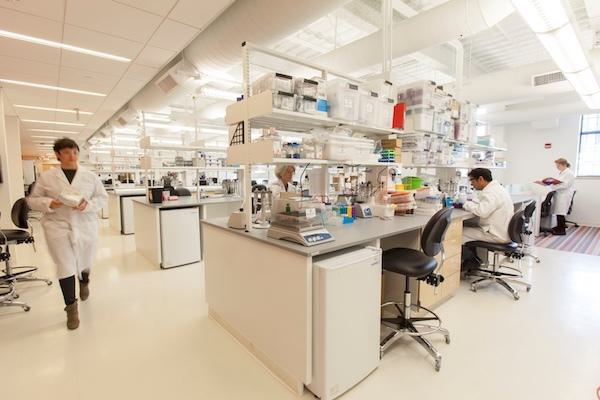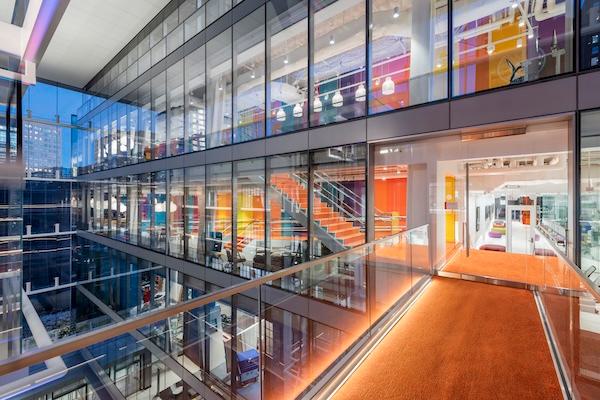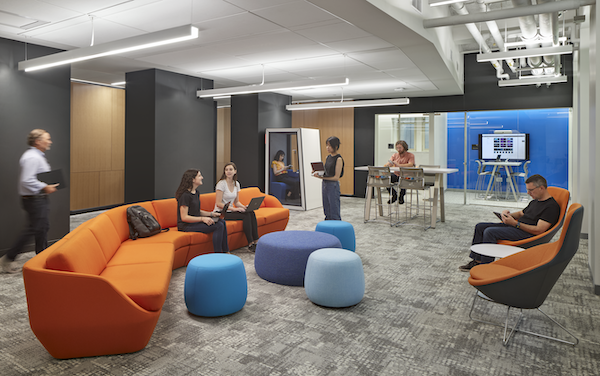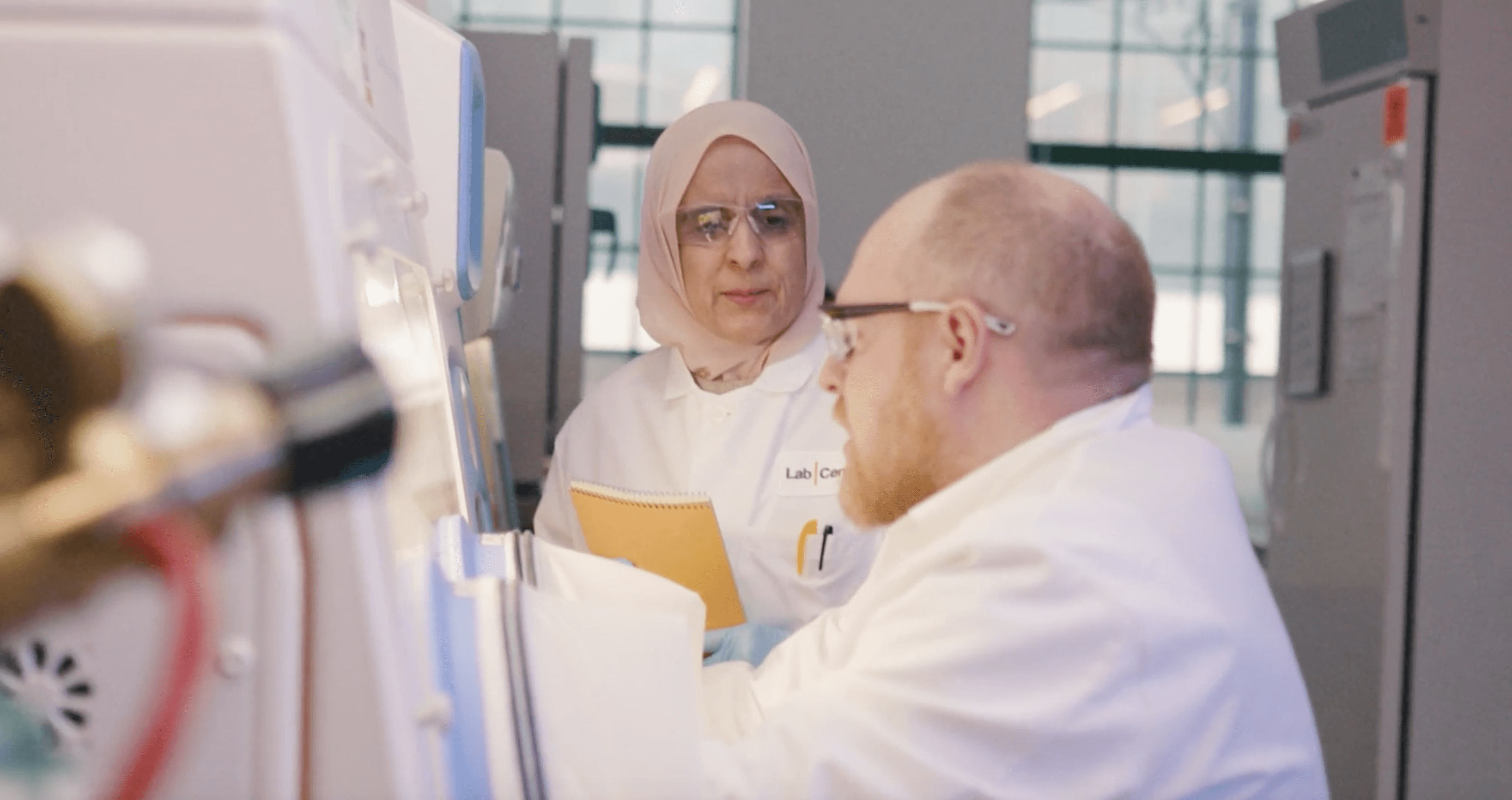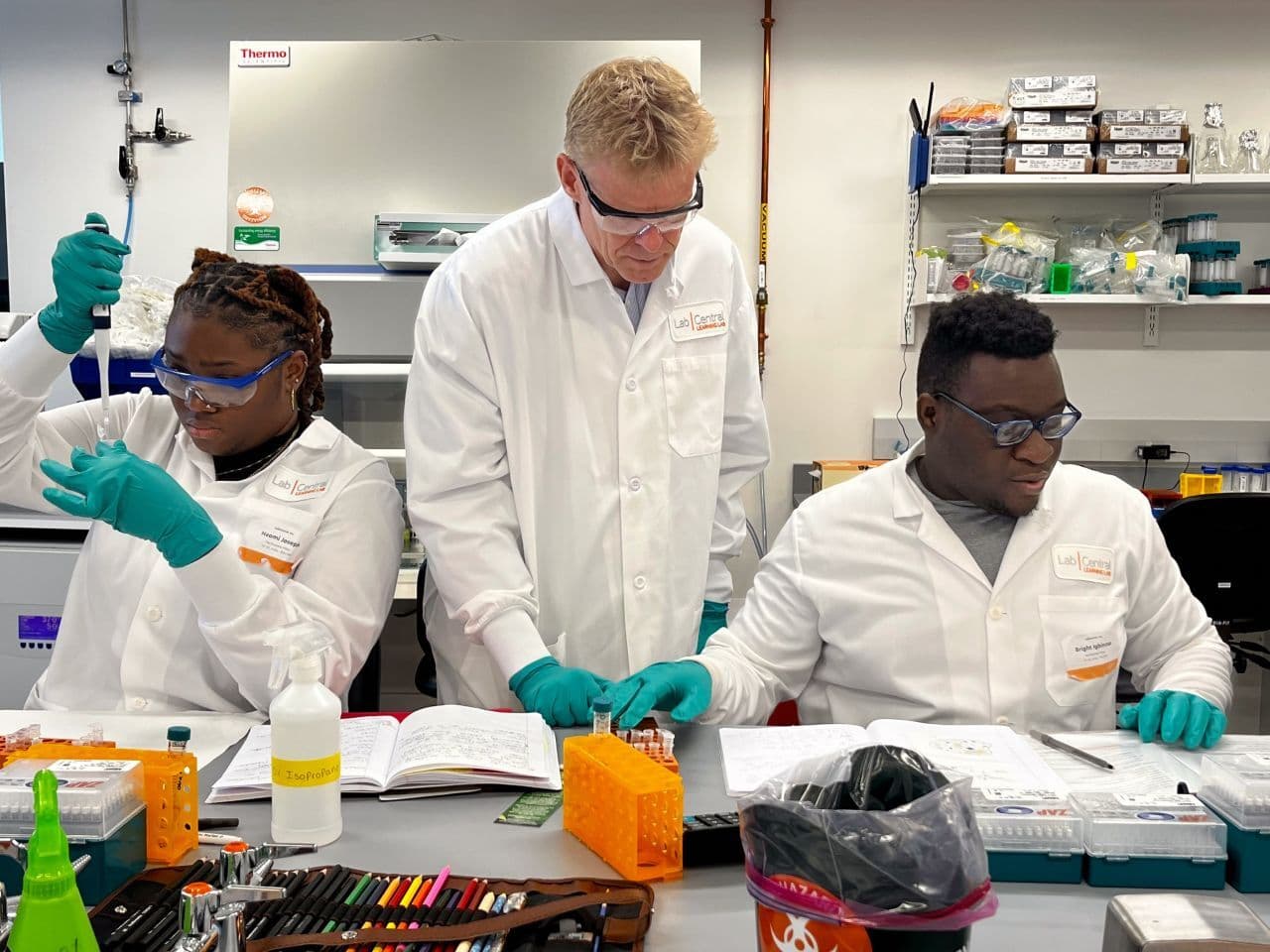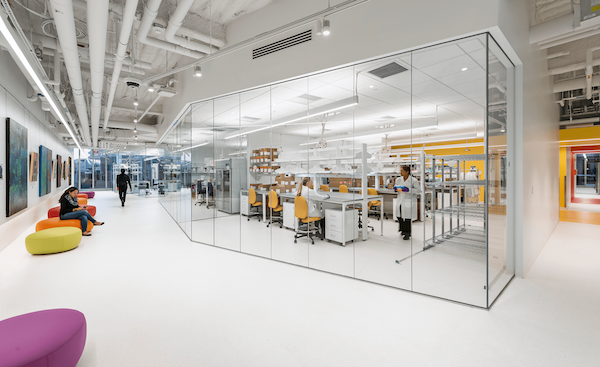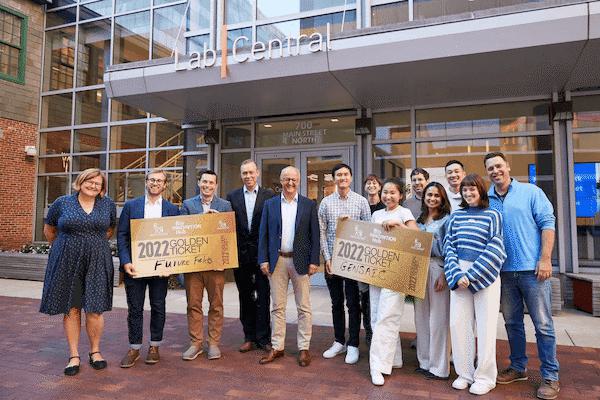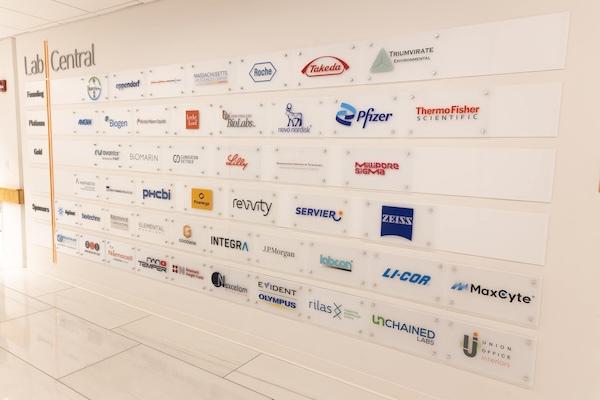LabCentral Ignite harnesses community to address racial and gender equity in life sciences innovation. As part of the Ignite initiative, LabCentral collaborates with a diverse ecosystem of nonprofit organizations, educational institutions, corporations, and other industry players, all committed to confronting underemployment and unemployment head on and creating systemic, inclusive change.
Krista Licata, managing director of LabCentral Ignite, sat down with Sarah MacDonald, the Executive Director of the Boston office of one of these organizations, Life Science Cares. Here, they take a look at its new program One-to-One, and how it’s helping to create career possibilities for students from under-represented backgrounds by connecting them with networking and mentorship relationships with professionals in the life sciences field. One-to-One was launched in part through support from a grant made by LabCentral Ignite.
What led you to this field and ultimately to Life Science Cares? What makes this work so important to you?
After 10 years at MassBio, working with so many incredible companies to help build the life science ecosystem in Massachusetts, I had the good fortune of meeting Life Science Cares Founder Rob Perez as he was launching the organization. Rob shared his vision of an organization that could harness the financial and human resources of the life science industry to tackle one of the most intractable problems we face as a society-- poverty.
We founded Life Science Cares on the hypothesis that if we can bring the industry’s creativity, determination and collaborative spirit to bear on the structural and operational challenges that have left a third of our neighbors in Greater Boston below the poverty line, we can make a meaningful impact in our community.
In our first five years, we’ve achieved proof of concept-- investing $5 million and thousands of volunteer hours in partnerships with nonprofit organizations providing access to basic needs, access to education and access to opportunity. I’m so excited for what our next five years will bring.
Was there one “catalytic” moment that sparked the creation of the One-to-One program?
One-to-One was conceived as we were reflecting on success from our Project Onramp summer internship program. Project Onramp was built as an entry point for students interested in our industry, but lacking the connections to find that first internship opportunity. Onramp’s high touch model of support and mentorship for students has proven effective at increasing their interest in working in the life sciences sector and is starting to result in Onramp alum connecting with full-time work in the industry.
So what if we could make important network connections for thousands of students each year? The One-to-One platform matches students who are from low-income backgrounds, are first generation, and/or identify as students of color with life science professionals for career conversations. These conversations are intended to increase students’ interest in the fast-growing life science industry. We also hope this program provides students the chance to practice networking and other soft skills that are critical to long term career success.
Many of us in the life sciences can point to a time in our lives when we benefited from a friend, family or community connection. One-to-One levels the playing field and ensures that motivated, talented students have a chance to build a network and explore new opportunities for careers in our fast-growing, mission-driven industry.
What is your ultimate vision for One-to-One? How do you see it expanding geographically and programmatically?
One-to-One is a networking program to connect college students from underserved
backgrounds with professionals in our industry. We aim to power a platform for students to build networking skills, develop their confidence, and directly benefit from interactions with professionals that will improve students’ lifelong outcomes. We would like to see One-to-One be accessible to as many students as possible, especially for those who typically have limited access to our networks. These students are often from low-income backgrounds, first-generation college students, and underrepresented in our industry.
Because it is an online platform and we are all more accustomed to virtual meetings now, we look forward to expanding One-to-One to reach students and volunteers across the country in the coming months.
What do you see as key elements to achieving that scale and reaching as many students as possible?
We look at scale in several dimensions. First, from a reach perspective, we need to have the systems and processes in place to serve students and volunteers at scale. To do this, we are testing and assessing different technologies that can bring students and volunteers together in a way that is intuitive and easy for everyone. Additionally, this means developing a process to recruit student partners and involve them in the outcomes we are trying to achieve.
Second, we want to ensure these conversations are impactful for students and volunteers. This means investing in training and feedback loops so we can keep improving the experience.
Finally, from a sustainability lens, we need to ensure our program is adaptive to our organizational context, especially as Life Science Cares grows nationally. Technology can be an enabler. This work also involves a lot of learning about regional needs across our affiliate cities.
How do you see it fitting within the larger ecosystem of initiatives for underserved students, such as your Project Onramp program and LabCentral’s Career Forge program, among others?
One-to-One operates in a vibrant ecosystem. It is an entry point to introduce many students to our industry in an easy, low-commitment kind of way. We hope One-to-One can encourage these students to participate in follow-on programs like Career Forge or Project Onramp that continue to expand their network while building critical skills to thrive in our industry. Consistent across all of these programs is our shared commitment to connect historically excluded students to opportunities in our industry. As these initiatives expand in mutually reinforcing ways, we can also make it easier to demonstrate broader impacts.
What are some of the most entrenched obstacles for both underserved students and programs like One-to-One? How do you plan to take these on?
In addition to challenges in scaling, we are attuned to opportunities and barriers in the landscape. For example, there are many impactful organizations in STEM education and companies that champion their important work. We would like to ensure that new programs we take on are truly a value-add in the space. This involves a lot of discussion with organizations, including our nonprofit partners, and learning where they see the gaps and opportunities for partnering with our industry.
From a student standpoint, we’re finding out there is a big need to scaffold their experience in our programs. For One-to-One, that means designing the experience to be as fun and engaging as possible. For example, we ask industry professionals to fill out a profile that surveys their career backgrounds and personal interests. These questions humanize our industry to appeal to students who are looking for a meaningful connection. Another example is letting students decide which professional to contact. While we make recommendations based on profile information, providing that choice to students puts the power in their hands and affirms the values and interests they bring to our program.
Are there any student stories that have resonated with you in a particularly deep way?
Overall, early feedback has been substantially positive and insightful. We’ve seen some One-to-One meetings turn into sustained mentorship. Other conversations have unlocked career opportunities. Our pre-survey revealed that more than a third of One-to-One students have never interacted with any industry professional prior to our program. Considering the enormous evidence base that shows how important networking is, it has been amazing to learn what students value and gain from One-to-One. One student told us that the professional she met with was the only person who seemed to understand her lived experience since the student arrived in the U.S. for college. This sends a message to our industry. We know that not all students have access to mentoring opportunities, let alone direct access to networks of professionals in their career of interest. We have the opportunity to proactively reach these students where they are and start to cultivate these relationships.
Specifically, this feedback from student Melanie Mariluz sticks with me. Melanie is of Peruvian descent and is a sophomore at Roxbury Community College studying for her associate’s degree in biological science. She is also the President of the Science Club and the Vice President of Phi Theta Kappa Honor Society.
“I have gone through many ups and downs, and it has given me experience in life. Getting where I have reached so far has not been easy… however, I am not a person who gives up. I sought help and because of it I have met some wonderful people along the way. I was able to participate in the Life Science Cares One-to-One program which has helped me a lot in very important decisions for my life at my university, since I plan to transfer to a four-year university, job and volunteer opportunities. I had the great pleasure to have meetings with Alline, a senior scientist at Verve Therapeutics, with whom I felt very identified. She not only cared about helping me on the academic side and looking for opportunities but also gave me advice to have clearer ideas about what I was looking for and made me rethink many decisions I thought I had already decided, see them in another way. [Alline is] a very kind and charismatic person with whom he has supported me in many aspects.”
What are your immediate priorities for One-to-One, in the year ahead?
We are learning as much as we can this year and the next. This is an iterative process of making continuous adjustments based on feedback. Some of those adjustments are process-based, looking at how we should best use technology to reduce inefficiencies in the workflow. Others are more adaptive in nature as we determine, with student support and corporate partners, the model, timeline, and metrics that our stakeholders care about. We’re really excited to grow the network with new student support partners and industry volunteers!
